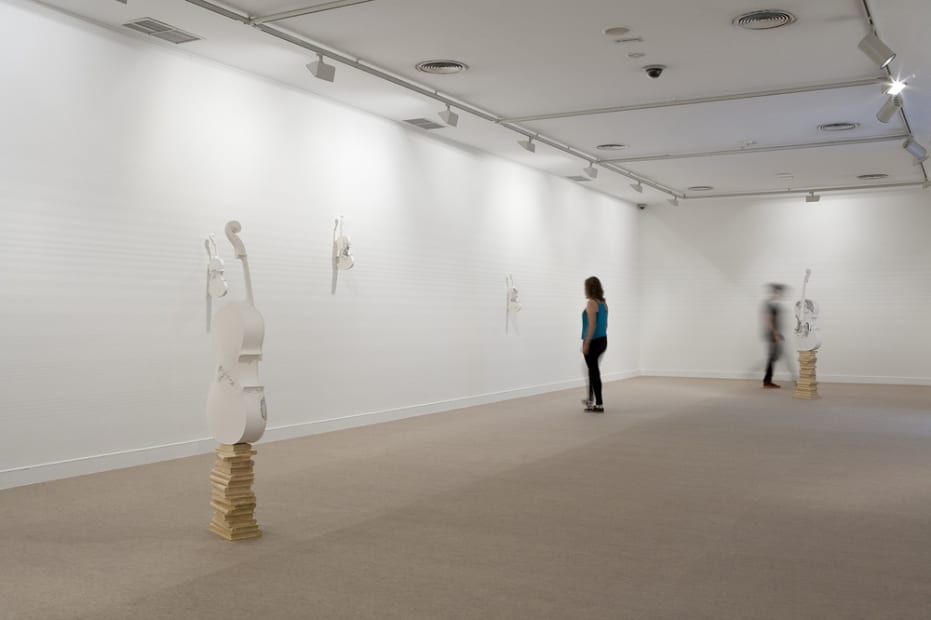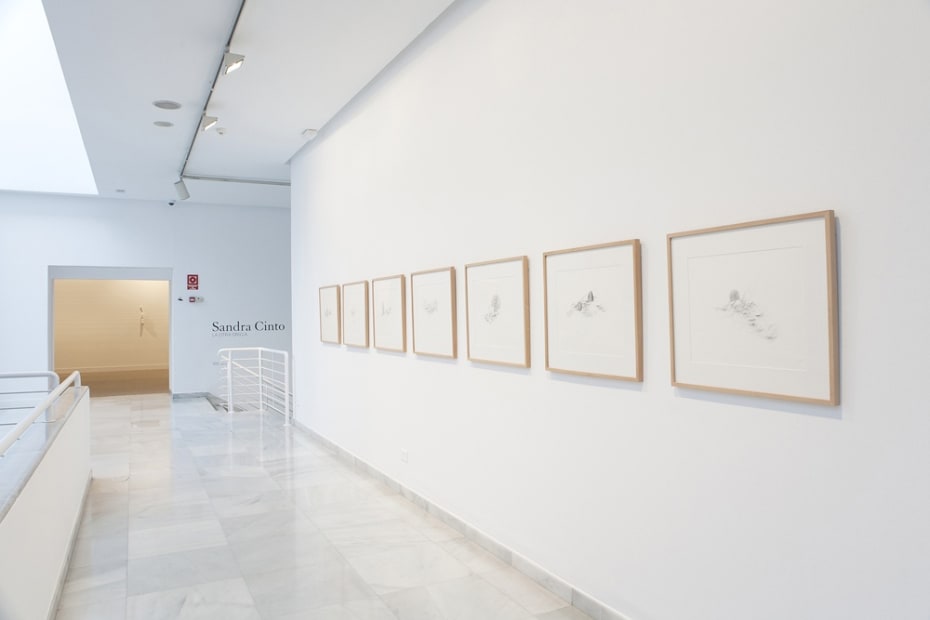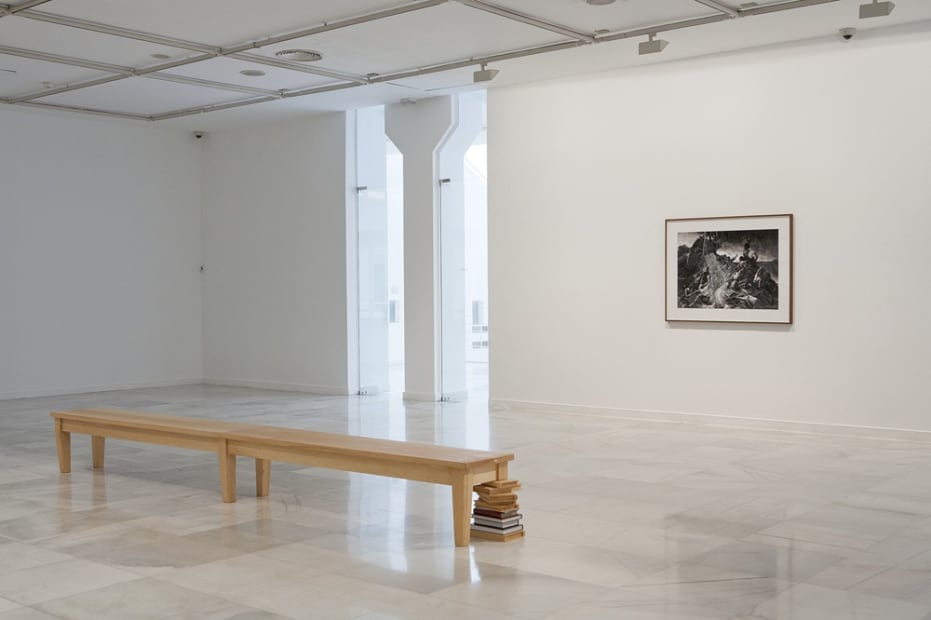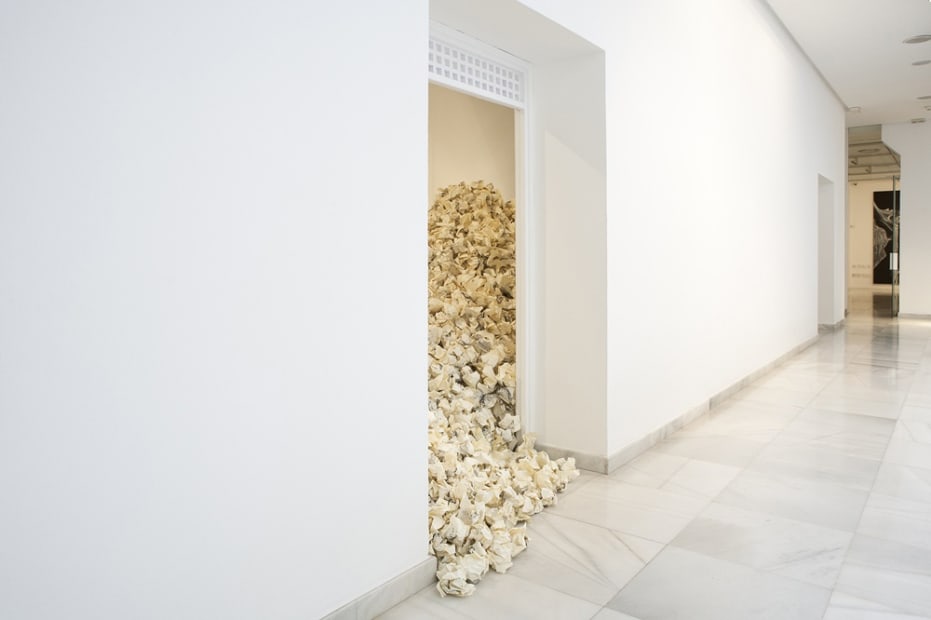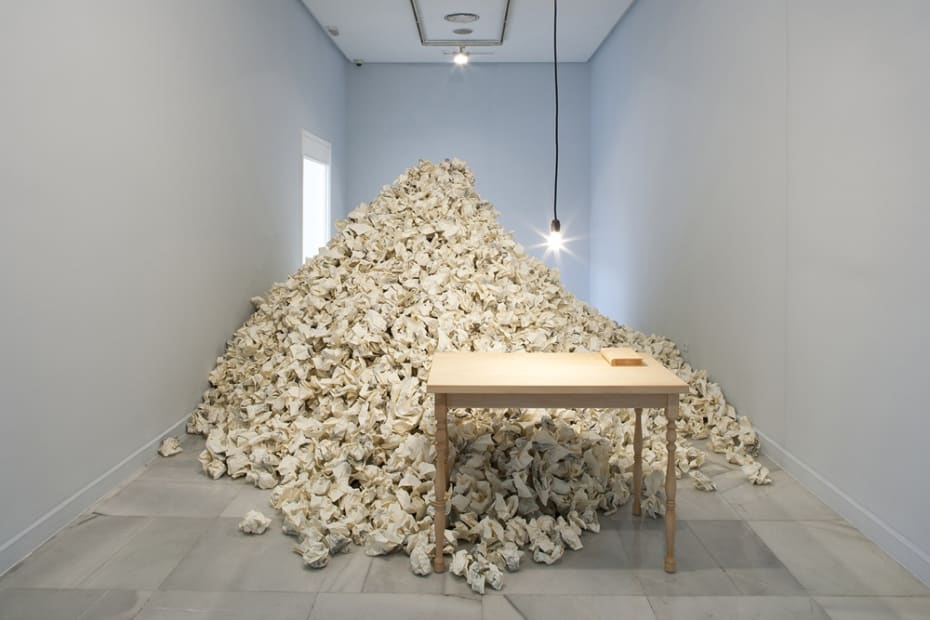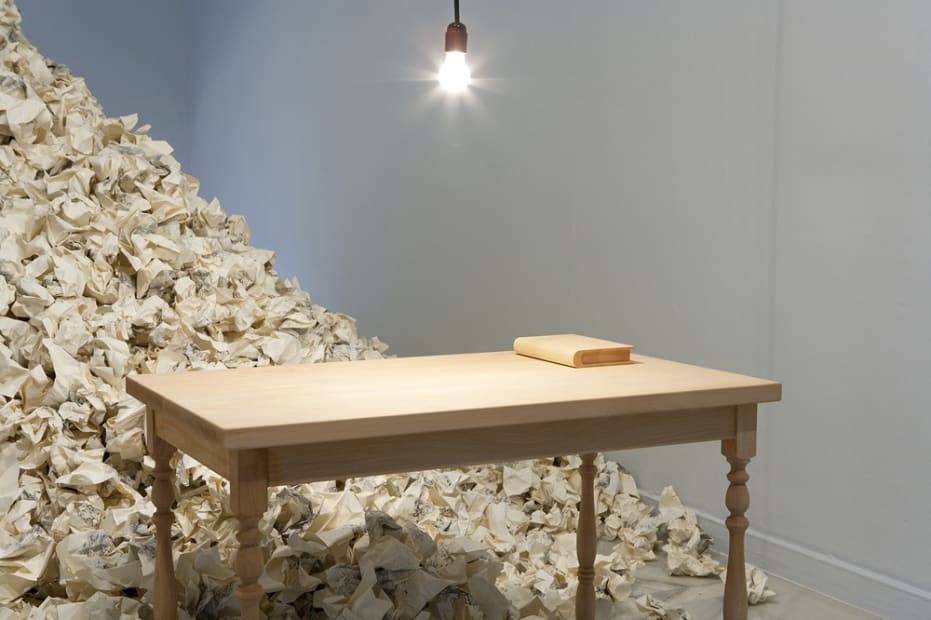The exhibition La otra orilla (The Other Shore), especially produced for CAAM, presents the work of the Brazilian artist Sandra Cinto (Santo André, São Paulo, Brazil, 1968) from three different perspectives. These show the artist’s multiple ways of dealing with political issues through a poetic language based on such disciplines as painting, drawing, sculpture and site-specific installation.
Her work makes us move between seduction and tragedy, between the attraction of beauty and the devastating awareness of the wounds caused by the existential voyage. Sandra Cinto finds a visual way to depict the difficulty of voyaging through life, of surviving. So she draws oceans that are actually borders, emotional landscapes that respond metaphorically to that hard task of traveling from one place to another. Often these other borders are waves that look like mountains: equally natural, equally immense. Her seas are walls. But other times these seas are bridges and the borders become softer, more human, and give way and access to the other shore. Nature is transformed into culture.
Sandra Cinto’s art is a way of resistance, a utopia of beauty, justice and social harmony. Her works seem to communicate an abyssal experience: an intent that is never totally fulfilled, which is why she insists on a series of subjects but, at the same time, never gives up hope. Sandra Cinto’s landscapes are an invitation to sink into the beauty of the infinite. An example of this is Mar Abierto (Open Sea), the huge mural that the artist has prepared for CAAM. It deals with the difficulty of starting a trip that, for the Romantics, ended up turning the sea into a hostile horizon, into the end of a voyage. What really attracts us is tragedy, and shipwrecking as the symbol of an overwhelming nature.
Another line of work, more recent, and also recognizable in her specific project for CAAM, is dealt with under the title Pausa (Pause). It reflects the need for silence in our contemporary society, dominated by chaos and noise. Here, silence is a sort of precipice, of abyssal image where time stands still. Different musical instruments remain paradoxically mute and a chromatic withdrawal can be noticed here, as compared to other halls. Just like in the other halls, transformed into ambiences, we don’t perceive borders or perspectives, and the viewers find themselves caught up in a beautiful world that, nonetheless, conceals a militant existential concern for social problems and inequality. This is, then, the political facet of Cinto’s work, which also alludes to the difficulty of the journey, that is to say, life. Her last landscape is a music staff where space and time are noted –but also silence and emptiness… from the other shore.
